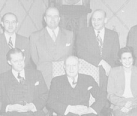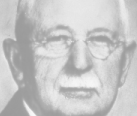news 1999 planning to sell your practice?
by Gary Wiser, DMD, MS, MBA
The reasons to want to sell an orthodontic practice are many; retirement, relocation, disability, death, career change, etc. In this article, I shall concentrate on the retirement reasons, and will attempt to discuss the principal issues involved when considering the sale of our practices.
Are orthodontic practices really any different from other dental practices when their sale is being considered? In a word, yes. One of the attractions of practicing orthodontics is the general absence for the need to respond immediately to emergencies such as acute pain, swelling, and traumatic dental injuries. This variation from most other areas of dentistry; general practice, endodontics, periodontics, and oral surgery places a much higher value on the personal goodwill indigenous to the practice and a lower value on the professional goodwill component. When a patient is in extreme pain with an abscessed tooth, just about any endodontist or general dentist willing to provide the needed emergency treatment is welcome. This is an example of professional goodwill. Orthodontics requires a long-term patient relationship, which is dependent on the personal goodwill built over many years by the orthodontic practitioner and his/her staff.
A second consideration is the transferability of the majority of the current referral base to a buyer. Typically, if not frequently, at the time of the decision to sell the senior orthodontist is facing diminishing referrals. As his/her colleagues are also retiring from practice, he/she has reduced the number of hours spent for treatment, and also they are usually treating fewer young patients.
A third consideration for orthodontists is the transition period itself, which is generally longer than the sale of other dental practices. While the ownership of many general dental practices can be successfully transferred in a relatively abbreviated period of three months or even less, an orthodontic practice transfer period should be at least six months and possibly longer, if sufficient income is available for both orthodontists during the transition period. This is due to the longer treatment period and the need to thoroughly familiarize the buyer with the individual patients' treatment objectives, their parents and siblings, and the referral sources.
A fourth and no less important differentiating characteristic of orthodontic practice transitions, is the valuation of the accounts receivable. The unpaid amounts of the financial contracts signed by the patients and their families may have a greater value than the total sale price of the practice! Characteristically, a number of patients at the time of sale have paid in full but their treatment is not completed, some are behind with payments, although their treatment may or may not be aligned with their financial contracts, and a number of patients will be on the mark when valuating their treatment progress and their financial agreements. It is best for the seller and the buyer to carefully review the financial and treatment records of the active orthodontic patients in the practice within a month of the ownership transfer date. This is the first important step to determine, as equitably as possible, the amount of the receivables, which will be retained by the selling orthodontist and what receivables the buyer can anticipate for improved cash flow following the sale.
Having discussed some of the differences between an orthodontic practice sale and other dental practice sales, I think it appropriate to outline what steps an orthodontist should consider to increase the success for selling his/her practice.
1. Be Sure You Are Ready To Sell - the selling orthodontist should try to evaluate the many complex financial, emotional, and psychological ramifications involved with retirement. Financially, you must determine the amount necessary to meet your living expenses from the practice sale proceeds, Social Security benefits, retirement plan funds, and income from personal assets acquired over the years. Emotionally, the doctor is relinquishing his/her lifelong practice, and the relationships with patients, their families, the referring doctors, and the staff.
Psychologically, orthodontists have a need to sustain their sense of self-worth by making a contribution to the well being of our fellow man. How can this need be satisfied after retirement? Perhaps offering your professional or personal services to non-profit organizations, teaching, performing other volunteer work, pursuing a hobby or fulfilling a lifelong dream can all assure a satisfying retirement. I have worked with a number of orthodontists who were well into negotiations with a willing buyer, only to realize they were not ready for retirement for financial, emotional, or psychological reasons. It is far better not to begin the complex process of practice transition until you are prepared to see it through. Don't "test the waters" with the sale of your practice, it can be costly and is certainly unfair to the prospective buyer.
2. Establish A Workable Strategy - I have found each orthodontist's needs and desires to be individually unique. A "cook book" approach for orthodontic practice transitions will not be successful for the great majority of us. The selling orthodontist's needs and the size of the practice will determine the transition period for him/her to continue to work in the practice following its transfer of ownership. Likewise, the size of the practice will determine if the buyer can work in the practice prior to its sale. An orthodontic practice must provide sufficient income for both the buyer and the seller to practice together for an extended period of time. When this is not the case, the transition period must be shortened because the buyer can not pay for the practice, pay a salary to the seller, and retain enough income for his/her personal expenses.
3. Be Realistic - when orthodontists have unrealistic expectations of the value of their practice and the terms and conditions for its sale, the transition is sure to fail. We should learn the realities of the marketplace by consulting colleagues who have recently sold their practices and professional orthodontic practice brokers who are involved in selling practices on a daily basis. It is definitely easier for a buyer to buy and a seller to sell a practice when the value has been established by an independent appraiser. Introduction of a third party greatly reduces the potential for confrontation between the doctors, and facilitates agreement on the critical issue of practice value. The terms and conditions for the sale can be mediated in the same manner by independent professionals. Please remember, the terms are not as important as the character of the prospective purchaser.
4. Maximize Practice Profitability - there are many factors that influence the value of an orthodontic practice, but there is no doubt the most significant factor is the practice profitability. Unfortunately, the selling orthodontist contemplating retirement tends to "coast" and the resulting decline in practice growth, gross revenues, and net income dramatically decreases the practice sales price. Orthodontists wishing to maximize the price for their practice should continue to increase patient volume, adjust fees on a regular basis, and maintain strict overhead expense controls in order to realize this financial objective.
5. Marketing the Practice - how to market your practice for sale is a critical decision that can affect the success of your practice transition. Orthodontists may elect to market their practices themselves to save the costs of a practice broker, an accountant, or other financial advisor. While this can be true, the sale of an orthodontic practice requires knowledge of significant legal and tax issues, which must be resolved. A professional practice broker will understand the marketplace and have access to potential buyers. Determining the financial condition of the buyer is essential to assure that necessary financing can be obtained and the selling doctor will be paid. There is a large amount of dollars at stake in a practice sale and employing the services of a professional will usually provide a higher return and the peace of mind in knowing the practice sale is being handled properly.
6. Obtain A Commitment Deposit - a down payment on the agreed practice cost should be received as the written sales agreement is being drawn. The seller is taking the practice "off the market" and generally will begin to incur legal and accounting fees connected to the sale. The buyer by submitting a deposit is demonstrating willingness to proceed with the purchase in "good faith." How much should the deposit be? The answer is - it depends! For a smaller practice, as low as $5,000 could be acceptable, but larger practices would require deposits of as much as $25,000. If the buyer is employed by the practice, 5 - 10% of his/her earnings should be escrowed in addition to the deposited funds to increase the buyer's financial commitment and lessen the burden at the ownership transfer date.
7. Determine the Pre and Post Sale Transition Periods - almost every orthodontic practice sale will require a pre-sale transition period. The only exceptions would be the disability or death of the seller. The time needed for the buyer's adjustment to gain the necessary clinical and managerial skills, and to meet and cultivate the seller's referral base, will vary in each instance. I have seen successful transitions varying in time from 6 months to 2 years. It solely depends on the doctors involved in the transition and there is no universal answer.
After the sale, there is quite often a reversal of roles; the seller becomes the associate in the practice. This is a very viable situation because the continuing presence of the seller, even in a limited capacity, can ensure the continued productivity and profitability of the practice.
8. Provide Flexible Financing - the seller's initial reaction is to require 100% cash for the practice sale. This decision usually is not in the best interest of the buyer or the seller. When a buyer has to borrow almost the entire purchase price of the practice from a bank, the bank characteristically compensates for the risks involved in the management of a dental practice by charging excessive interest rates, points, and high loan closing costs. To conclude the sale, the seller may be forced to accept a lower sales price for the practice. Simply because the higher bank interest rate increases the cost of the debt service, and with a limited cash flow in the practice, the buyer can't pay the bank, the seller, and the operating expenses for the office, and still retain a sufficient amount for his/her personal subsistence.
The seller may also be involved with rather complex tax ramifications, which will make more dollars available to the selling doctor by designing the practice purchase over a period of years (3 - 7) as opposed to a one-time cash payment.
We should also face the fact that practices sold with a 100% cash scenario typically fare much worse than when seller financing is available. By removing the seller's financial interest in the practice, the seller will not generally provide the extra amount of advice, mentoring, and guidance, which can be so instrumental in the success of the buyer.
9. Secure the Practice and the Payment - the seller should take any steps necessary to ensure repayment of the funds due from the sale of the practice. The buyer should be required to purchase sufficient life, disability, and business overhead insurance to cover the repayment of the financial obligations to the seller. The seller should also receive an assignment of the buyer's office lease and a reverse covenant not to compete to insure that in case of default, the buyer can not practice in the area for a period of 2 - 3 years.
10. Real Estate Concerns - many orthodontists who own their office building want to lease the facility indefinitely to the buyer. This is not a good decision in most cases because the buyer will not want to pay rent for an extended period of time, and would usually elect to own the practice facility as soon as‚ it is financially feasible. The currently low mortgage rates catalyze the buyer's ownership desires, because the monthly mortgage payments can be less expensive than the rent being paid to the seller. The purchase of the building will not have a significant financial impact on the buyer, as long as cash is available for the down payment.
It is generally preferable to package the sale of the practice and the building for an agreed upon cost at a future date. Most commonly the building is purchased in the year following the final practice repayment. An equitable lease will be provided by the seller at the time of the practice closing. This should satisfy both parties, and will provide time for the buyer to establish the necessary track record to obtain satisfactory financing for the building. seller financing is not recommended for real estate sales because of the extended number of years required for completion of the obligation, and the lack of tax consequences similar to the sale of a practice. The profit from the sale of a professional building would be almost completely at the capital gains rate of 20%, but the sale of a practice usually has a large component of ordinary income tax ranging from 35 - 45%.
Concluding Comments
Some of the complexities described in this article related to orthodontic practice sales should not be deterrents to any of us considering retirement within the next few years. Contrary to what many of us have been led to believe by the needs of national management companies seeking to purchase our practices, many buyers are available for high quality, progressive orthodontic practices. Careful planning and attention to the mutual expectations of the seller and the buyer will consistently result in very successful and rewarding practice transitions.
Gary Wiser, DMD, MS, MBA
Wiser Management
11 cedar Court
Perrineville, NJ 08535
Phone 609.259.8850 Toll Free 888.22WISER
Fax 609.259.0055


